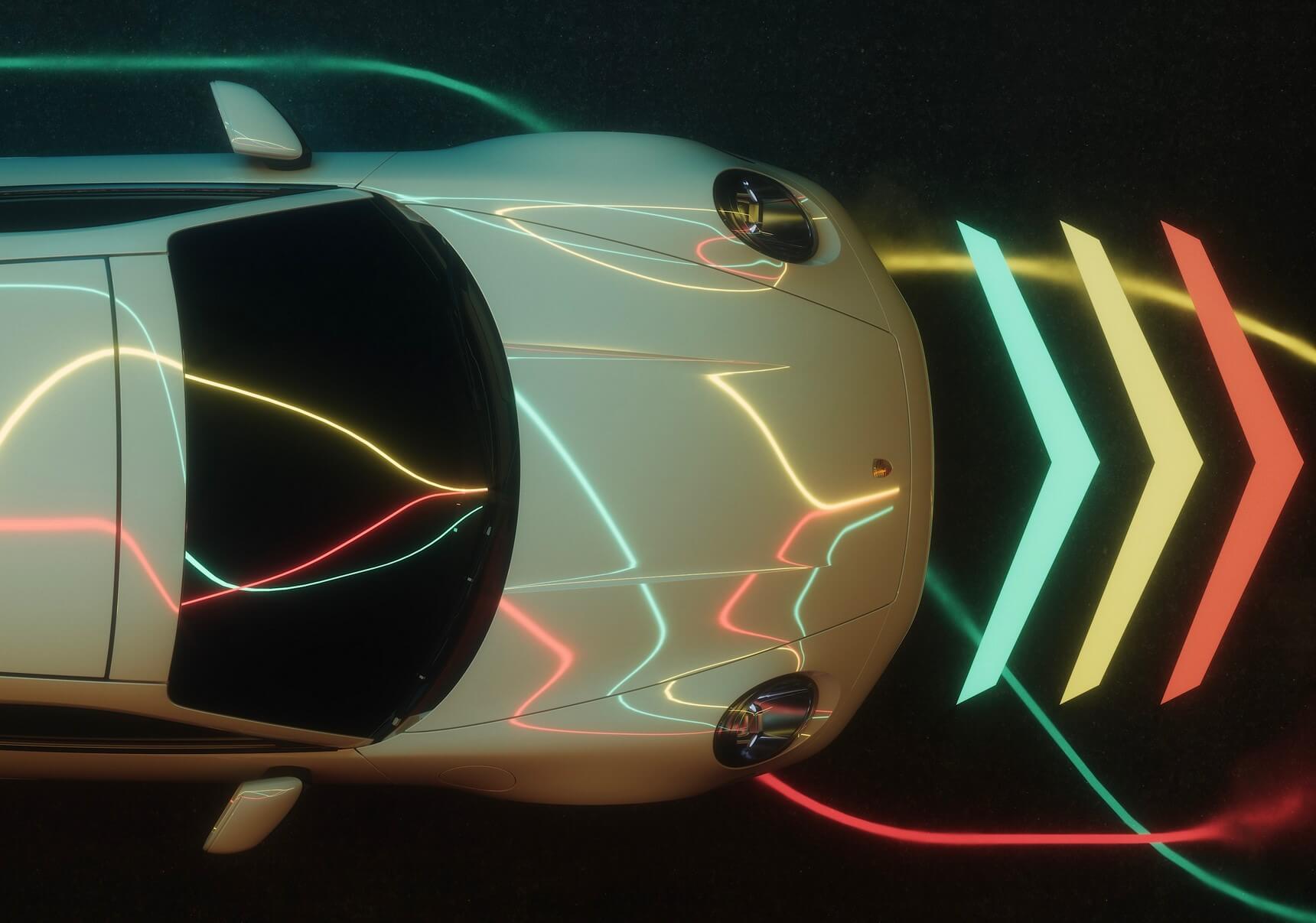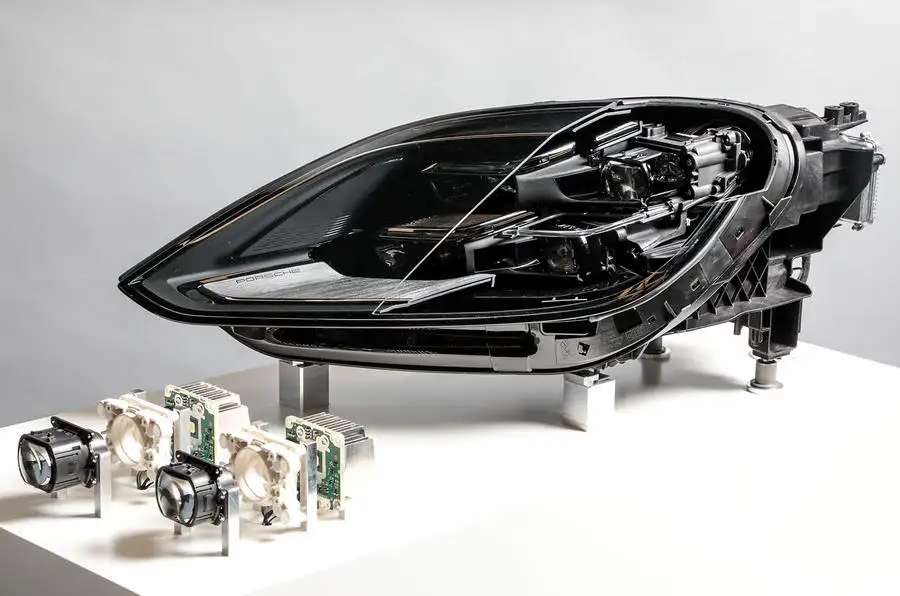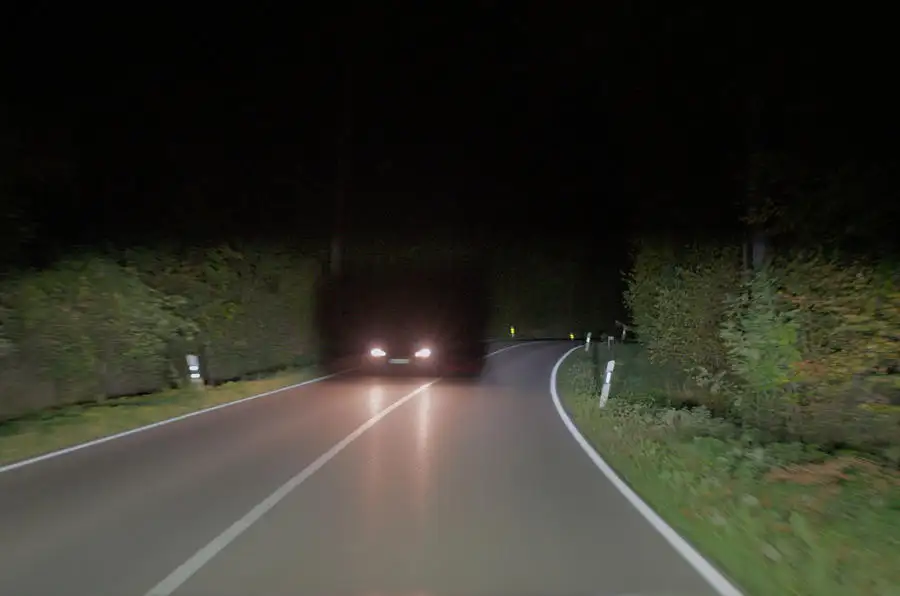Porsche’s advanced new LED Matrix high beam system is set to debut in 2023.
Porsche has revealed the new HD matrix LED headlight technology it plans to introduce in 2023, claiming it sets new standards in ‘glare-free’ high beam lighting performance.
The new technology differs significantly from that used by current Porsche models, with the matrix function for the low and high beam function now carried out by two separate light sources in each assembly.
Benjamin Hummel, Manager Light Modules and Regulation head of lighting modules at Porsche, says the move was driven by a desire to further emphasise the four-point styling that has become a signature design element of the German car maker in recent years.
To that end, the new headlight forgoes the single high beam matrix unit that sits in the middle of Porsche’s existing LED matrix headlight. It is replaced by two separate HD matrix units within the lower points of each headlight, or four units overall between the two headlight assemblies.
Incorporating new HD LED technology developed in partnership with Hella/Forvia, Infineon and Nichia each of the four units is imbued with 16,384 LEDs or pixels. This provides a combined 65,536 pixels for the high beam matrix function, which operates at an intensity of up to 160lx – in combination with the additional high beam it totals 300lx per headlight.
By comparison, Porsche’s existing single-unit LED matrix system offers 84 pixels per headlight, or a combined 168 pixels between the two light sources.
Hummel says the new HD matrix set-up provides added homogeneity and performance compared with the existing matrix unit.
“At 300lx, it is possible to project the high beam up to 600m. But it is not only about a certain range. You need good light distribution within the whole field, too. We achieved this with four light sources. The brightness of the centre and side areas can be continuously adjusted for added roadside illumination. Greater illumination leads to better lighting performance,” he said.
The breakthrough that has allowed Porsche to package the high and low beam function of its new HD matrix LED headlight into two separate units per assembly is new micro-LED technology. Each LED is described as having the thickness of a human hair, allowing 16,834 separate LEDs or pixels to be packaged in each of the light sources.
A newly developed HD ECU also provides automatic 3D graphic calculation of the lighting contribution of each LED, says Porsche.
In combination with a camera mounted within the windscreen, the new Porsche headlight provides matrix properties, with fellow road users, on-coming cars and other areas able to be blanked out of the light projection.
“Navigation, traffic, chassis and steering parameters are also part of the calculation,” said Dominik Walter, Manager Light Electronics and Functions.
The intensity of the high beam HD matrix light can now be adjusted in 1024 different steps, with 60Hz operation enabling a refresh in the projection every 16 milliseconds. This is claimed to reduce glare and dazzle on road signs and the like.
Among the functions offered by the new HD matrix LED headlight are regular low and high beam, glare-free high beam (also known as the Performance setting), adaptive highway high beam, dynamic safety zone and sign glare reduction.
Porsche has also programmed its new headlight to provide a welcome and departure animation. Despite the headlight’s claimed increase in performance, Porsche says it is not heavier than the unit it replaces.
The ground illumination and additional high beam are housed within the two upper points of each headlight, operating with three pixels each for a total of 12 pixels in total.
To aid in the development of headlight technology, Porsche has established a new light tunnel at its Weissach-based R&D centre on the outskirts of Stuttgart in Germany. Consisting of an asphalt track measuring 100m in length and 15m in width, the windowless two-storey facility houses a new goniometer for the precise measurement of light angles among other test and analytic equipment.
The main testing hall of the new Porsche light tunnel allows engineers to test light projections of up to 90m and to a height of 4m.







